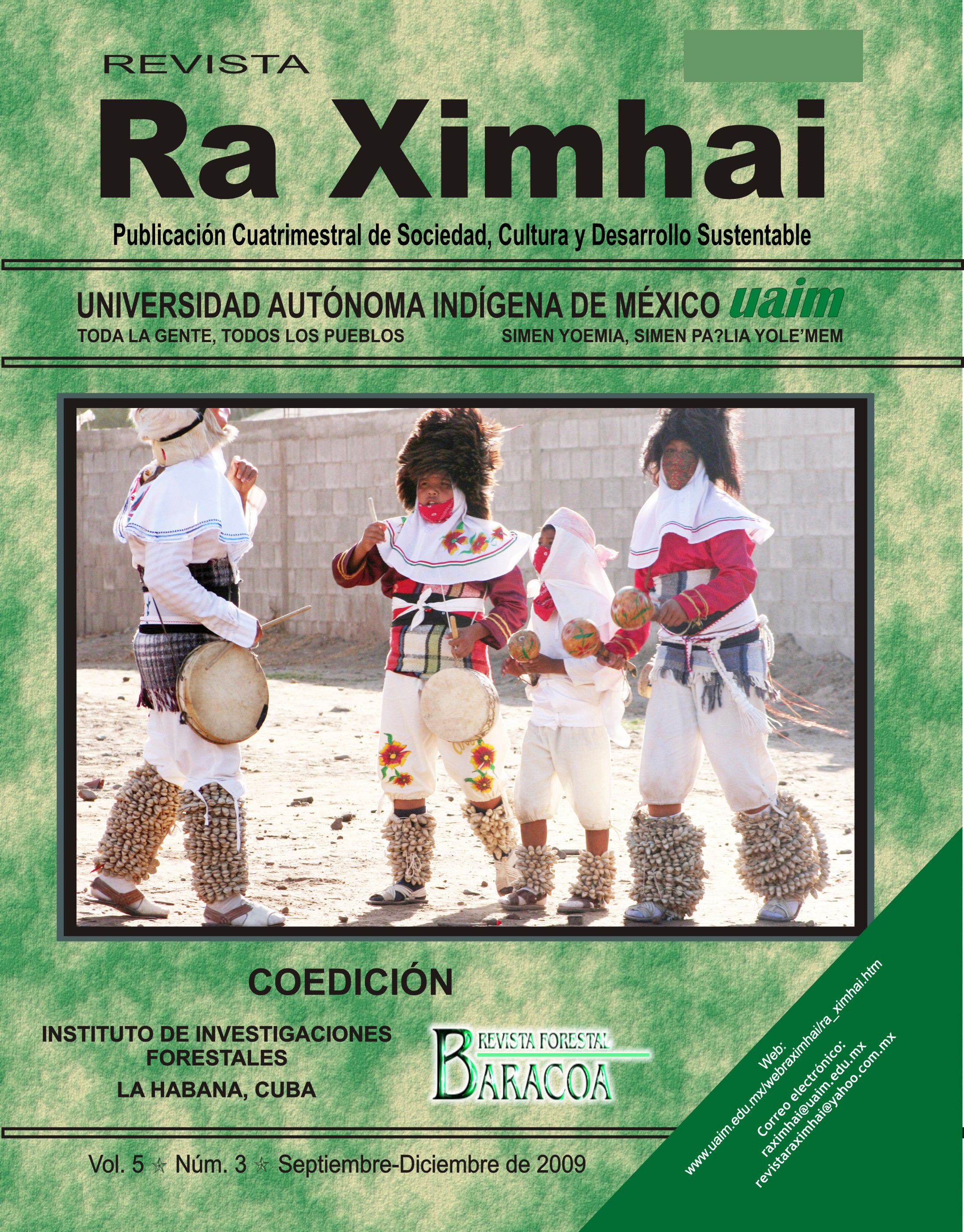Pregermination treatments on ironwood seeds (Olneya tesota A. Gray) and propagation in compost substrate of water lily (Eichhornia crassipes)
DOI:
https://doi.org/10.35197/rx.05.03.2009.07.rsKeywords:
Imbibition, scarification, seed dormancyAbstract
The effect of seven different pregermination treatments on the germination percentage of ironwood (Olneya tesota) seeds at 20 days was evaluated; T1) control, T2) 1 h imbibition in water, T3) 2 h imbibition in water, T4) 30 min imbibition in water, T5) 10 min in 40% H2SO4, T6) 10 min in 20% H2SO4, T7) scarification with sandpaper, T8) 1 h in cold. Statistically, scarification with sandpaper was the best treatment since it accelerated the germination speed and increased the germination percentage (70.3%) at 8 days after sowing, followed by T4 and T5 (7.8%); while T6 behaved the same as the control (6.25%). A 1:1 mixture (soil: water lily-based compost) was used as the substrate, the compost was made from water lily and cattle manure in a 3:1 ratio.
Downloads
References
Arriaga, V., V. Cervantes y A. Vargas-Mena. 1994. Manual de Reforestación con Especies Nativas: Colecta y Preservación de Semillas, Propagación y Manejo de Plantas. SEDESOL / INE – Facultad de Ciencias UNAM. México, D.F.
Cooperband, L.R. 2000. Composting: art and science of organic waste conversion to a valuable soil resource. Lab. Med. 31(5): 283- 289.
–––––FAO. 1991. Manejo del suelo: producción y uso del composte en ambientes tropicales y subtropicales. Organización de las Naciones Unidas para la Agricultura y la Alimentación. Roma. 177 p.
Faría, J; L. García-Aguilar y B. González. 1996. Nota técnica: Métodos de escarificación de cuatro leguminosas forrajeras tropicales. Revista de la Facultad de Agronomía LUZ. 13: 573-579.
Gerding V., M. E. Hermosilla, R. Grez. 1996. Sustratos de corteza compostada para la propagación vegetativa de estacas de tallo de Podocarpus nubigena Lindl, y Eucryphia cordifolia Cav. Bosque 17(2): 57-64.
Hartmann, H. y Kester, D. 1989. Propagación de plantas. Principios y prácticas. C.E.C.S.A. Mexico. 810 p.
Landis, T.D., Tinus, R.W., Mc Donald, S.E. y Barnett, J.P. 1990. The container tree nursery manual. Volume 2. Agric. Handbk. 674. Washington DC: U.S. Department of Agriculture, Forest Service. 87 p.
Mayoral, P. 1994. Reproducción de palo fierro (Olneya tesota) en viveros forestales. Universidad de Sonora – Rictus y Conservación Internacional A.C.
Pawuk, W. 1981. Potting media affect growth and disease development of container-grown southern pines. New Orleans, LA: USDA Forest service, Southern Forest Experiment Station. Research Note SO-268. 4 p.
Peregrim, G. y L.E. Hinesley. 1999. Effects of compost on the growth of fraser fir christmas trees in north Carolina. Agricultural Utilization Session. 32-43pp.
Razz. G., R. y T. Clavero G. 2003. Efecto de la escarificación, remojo y tiempos de almacenamiento sobre la germinación de Pithecellobium dulce. Revista de la Facultad de Agronomía LUZ. 20: 180-187.
–––––SAS Sistem for Windows. 2002. By SAS Institute Inc., Cary, NC, USA.
Shreve, F. y I. Wiggins. 1964. Vegetation and Flora of the Sonoran Desert. Vol. 1. Stanford University Press. Stanford, California.
Tinus, R.W. y Mc Donald, S.E. 1979. How to grow tree seedlings in containers in greenhouses. USDA, Forest Service. General Technical Report RM-60, 256 p.
Young, J. y C. Young. 1992. Seeds of Woody Plants in North America. Dioscorides Press. USA.
Van Schoor, M.J., Smith, I.E. y Davis, C.L. 1990. Preparation and utilization of pine bark as a growing medium for plants. University of Natal. Depatment of Horticultural Science. Pietermaritzburg 159 p.
Volke-Sepúlveda, T., J.A. Velasco Trejo. 2002. Tecnologías de remediación para suelos contaminados. Editorial INE-SEMARNAT.
pp. 37-38.
Downloads
Published
How to Cite
Issue
Section
License
Copyright (c) 2009 Rosario Raudel Sañudo Torres, Pascual Vázquez Peñate, Celso Armenta López , Hilda Susana Azpiroz Rivero, Cecilia Campos Beltrán, María Guadalupe Ibarra Ceceña, Jaime Alberto Félix Herrán

This work is licensed under a Creative Commons Attribution-NonCommercial 4.0 International License.
Usted es libre de:
- Compartir — copiar y redistribuir el material en cualquier medio o formato
- Adaptar — remezclar, transformar y construir a partir del material
- La licenciante no puede revocar estas libertades en tanto usted siga los términos de la licencia
Bajo los siguientes términos:
- Atribución — Usted debe dar crédito de manera adecuada , brindar un enlace a la licencia, e indicar si se han realizado cambios . Puede hacerlo en cualquier forma razonable, pero no de forma tal que sugiera que usted o su uso tienen el apoyo de la licenciante.
- NoComercial — Usted no puede hacer uso del material con propósitos comerciales .
- No hay restricciones adicionales — No puede aplicar términos legales ni medidas tecnológicas que restrinjan legalmente a otras a hacer cualquier uso permitido por la licencia.








